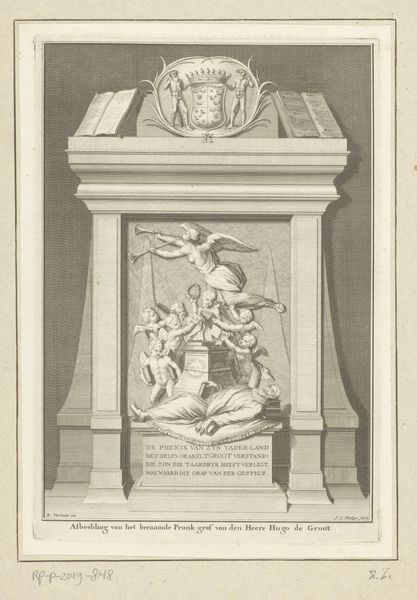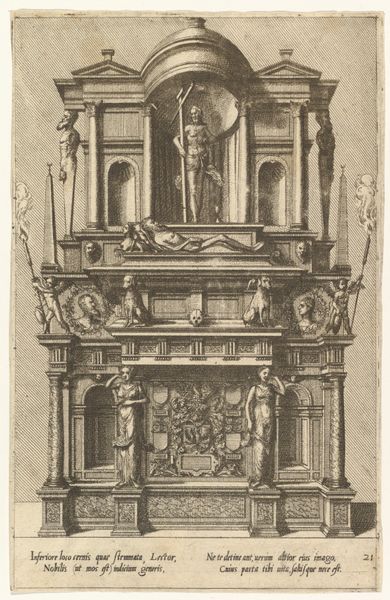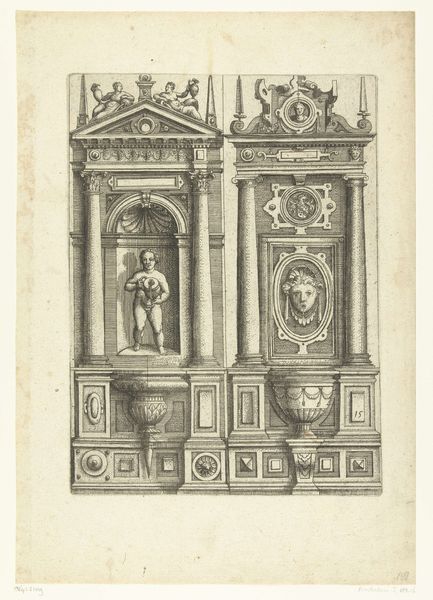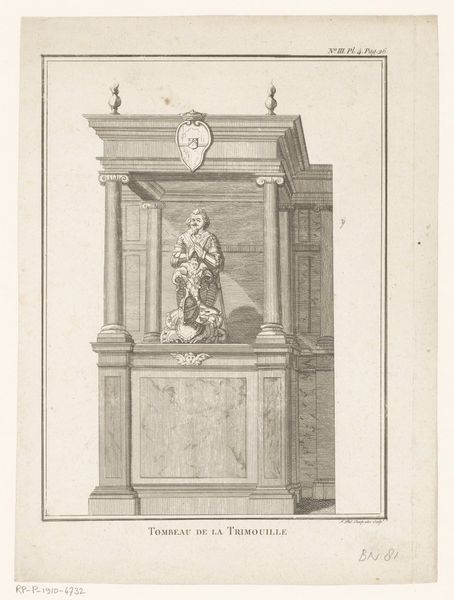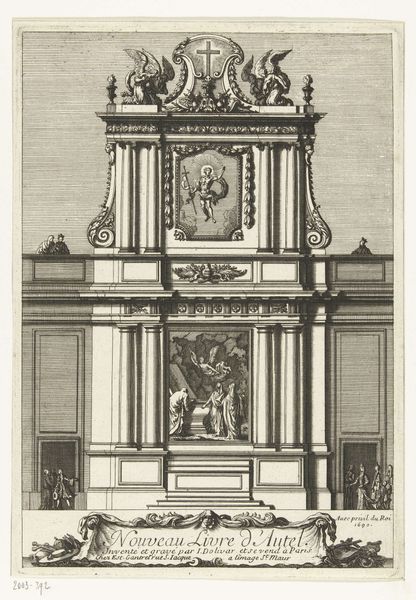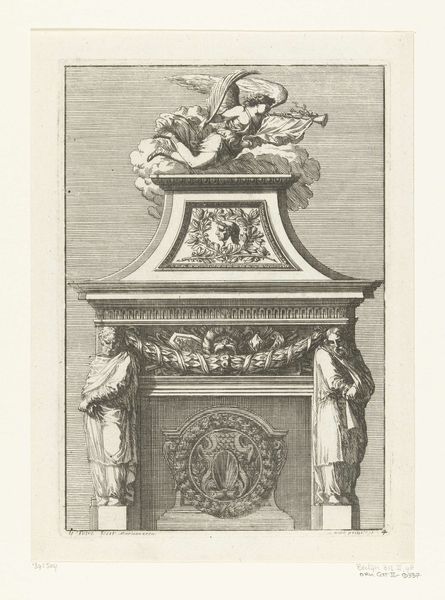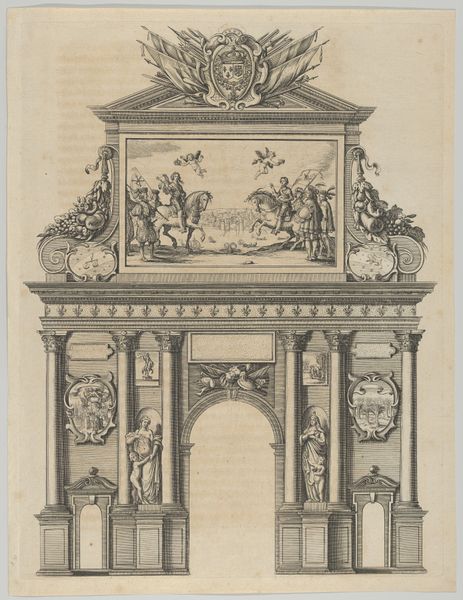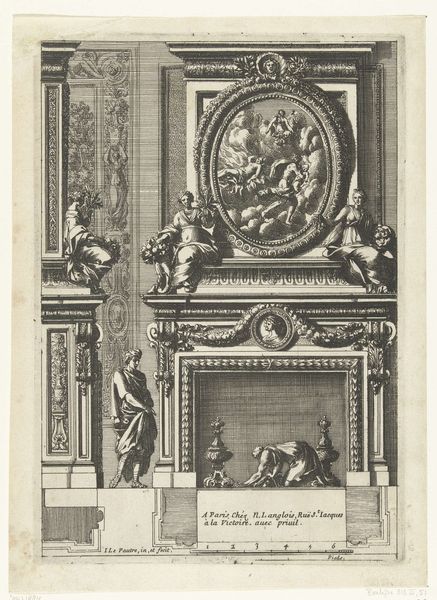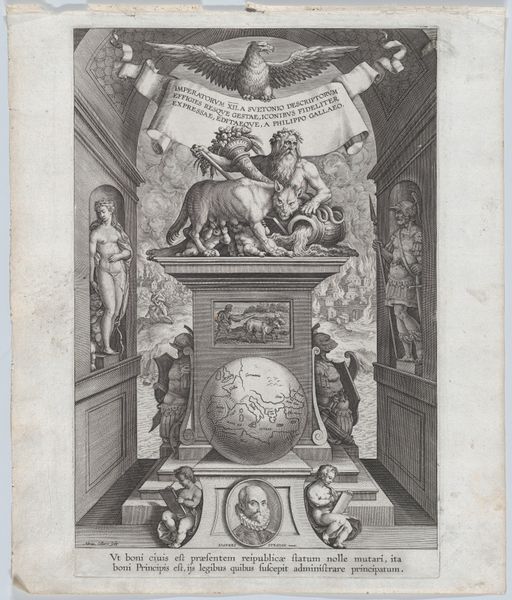
print, etching, engraving, architecture
#
baroque
# print
#
etching
#
old engraving style
#
history-painting
#
engraving
#
architecture
#
building
Dimensions: height 466 mm, width 352 mm
Copyright: Rijks Museum: Open Domain
Curator: Standing before us is a striking print titled "Façade met herderin, goden en ruiterstandbeelden," created in 1689. It's an etching and engraving showcasing a Baroque façade, and it resides here at the Rijksmuseum. Editor: My initial thought? A bold, declarative assertion of power through carefully constructed iconography. The entire composition feels intentionally grand, designed to overwhelm. Curator: Absolutely. Let's consider this in its historical context. The late 17th century saw rulers frequently employing visual propaganda. How does this façade reflect power dynamics? Editor: The inclusion of both Hercules, specifically labelled 'Hercules Francois' and equestrian statues of royalty situated prominently at the top signals the aspirations of power and nationhood in absolutist France. It presents a vision of strength and authority intertwined with the idealized classical past. And below, you have allegorical figures such as Mars and Pallas further rooting this building in historical contexts. Curator: Note also how classical allusions become political metaphors. For example, the central figure in the lower register: a shepherdess set amidst the heroic figures. Where do we situate figures like these amidst the battlefield and the kings on horseback? What cultural values are implied, and how do they contribute to or detract from the central visual power structures? Editor: Right. Are they alluding to some kind of societal idyll – or constructing some kind of hierarchy within idealized society? Curator: Considering the use of the Battles of Cassel and Seneffe as ornamentation on the building facade is important in this regard: We can interpret that even as we view these works now, the museum context recontextualizes the art with respect to power, and our perception becomes inevitably grounded in contemporary societal views on these matters. Editor: I agree. Even today, examining the historical, artistic choices lets us consider how intertwined politics were—and still are—with artistic expression. It underlines art’s continuous public role. Curator: This has underscored how artworks of the past invite continued critical analysis. Understanding context alongside iconography really allows a fuller appreciation of visual assertions made through works like this. Editor: And that by questioning how visual structures such as this influence our perspective of gender roles and political expression opens dialogues for a truly comprehensive historical understanding.
Comments
No comments
Be the first to comment and join the conversation on the ultimate creative platform.
